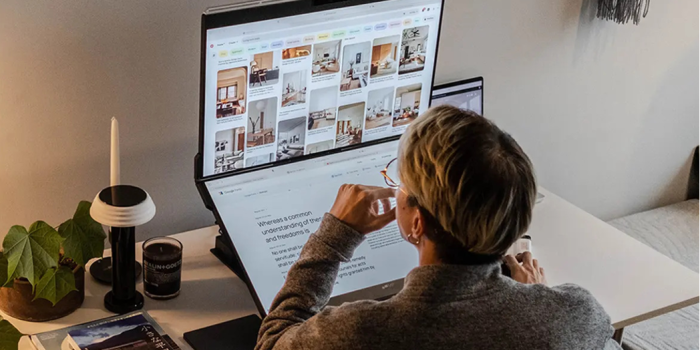The world of design is one where technology meets creativity. It also happens to be a place where both productivity and efficiency are extremely important. Designers are constantly on a quest to choose new techniques and tools that enhance their workflows and bring their visions to life. One of the most interesting innovations that is gaining traction today is the use of stacked monitors.
What Are Stacked Monitors?
Stacked monitors, also called multi-monitor setups or vertical monitors, are taking the traditional design workspace and tweaking it to be better for everyone. Geminos stacked monitors are an excellent example of how this works. Designers can make use of these monitors for a unique perspective on their creative processes.
The basic idea is to arrange multiple displays in a vertical manner, which results in a stacked tower of screens. With this type of arrangement, designers have a more intuitive and natural method to interact with their designs. It’s similar to the way someone might scroll through content on a smartphone or tablet.
More Screen for Design Tasks
One of the primary benefits of using stacked monitors is how much more vertical screen real estate is available. Traditional monitors are placed in a horizontal manner, which limits the availability of height. This means designers might need to scroll very often to view the entirety of the designs they have made.
With a set of stacked monitors, that limitation is gone and there is additional vertical space. Designers can see more information at one time. This is very beneficial when people are working on complex projects that might involve long web pages, code, or illustrations.
Natural Progression of the Design Process
Another benefit of using stacked monitors is the improved organization of design elements. Using a vertical orientation means designers can choose certain components and sections of their projects to place on each monitor. Compartmentalizing enhances focus and provides a clearer view of specific design elements.
As an example, one designer might be working on a website. One monitor could hold the header, while the second has the main content area, and the last displays the footer.
Better Multitasking Capabilities
Using stacked monitors makes it easier to do several things at the same time. A designer can have multiple design applications and tools open simultaneously by spreading them across a series of vertical monitors. This lets designers conduct research, reference inspiration, and compare different design iterations without needing to switch between applications and tabs.
Having more screen space creates a more fluid and efficient multitasking experience which can lead to a boost in productivity.
Alignment with Natural Eye Movement
Natural human eye movement also aligns very well with the vertical orientation of stacked monitors. People are better at scanning across a vertical space, which means that designers will have an easier time navigating through projects when using stacked screens. Vertical screens may be new, but they provide a break from strain associated with other types of monitor configurations.
This alignment with the human body reduces eye fatigue and strain, which means designers can work for longer hours without feeling any negative effects on their bodies. Being comfortable at work can improve the way a designer feels about what they’re doing, which results in more getting done at a higher level of creativity.
Considerations for Personal Preferences
Stacked monitors have a variety of benefits, which we’ve already noted. However, every person is different, and some designers may find this setup more helpful than others. On the other hand, those who use mostly vertical elements of design are likely to find stacked monitors are good choice. Think about your own preferences and the types of design tasks that you work on before you choose the ideal monitor configuration.
All in all, stacked monitors revolutionized design workflows by offering extended vertical screen real estate. This can enhance organization, improve multitasking capabilities, and align with natural human eye movement.
This is an exciting and new approach to monitor setups that gives designers a fresh perspective on the creative process. It could be the key to unlocking new levels of productivity and efficiency. As the design world continues to evolve, stacked monitors are a great example of a tool for designers who wish to elevate their design experiences and optimize their workspaces.


